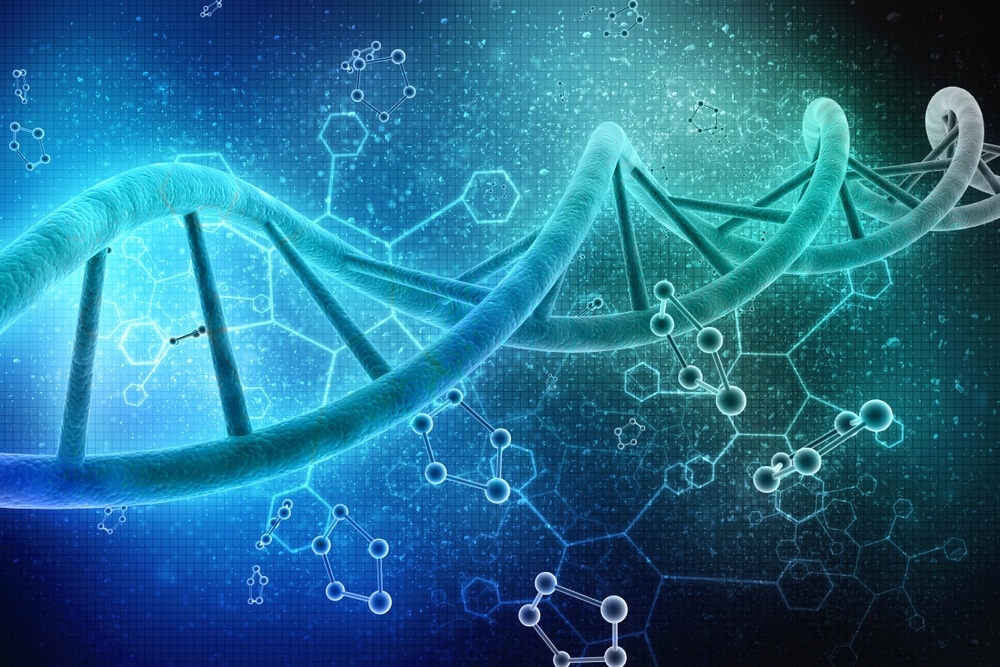Researchers from Radboud University Medical Center have successfully detected hidden genetic defects by using an existing technique on existing datasets. The team demonstrated that the “Expansion Hunter” approach can detect DNA errors that cause repeat expansion diseases, like ataxia—a movement disorder.
 Image Credit: ranjith ravindran/Shutterstock.com
Image Credit: ranjith ravindran/Shutterstock.comThis finding offers guidance to other researchers around the world on how to apply this approach to diagnose patients with genetic diseases.
With today’s diagnostic technology meant for genetic disorders, all 20,000 genes in human DNA can be mapped simultaneously. Doctors are gradually turning to this so-called exome method because it is widely relevant and increasingly offers molecular diagnoses. The exome approach is specifically appropriate for detecting simple DNA changes.
The researchers from Radboud University Medical Center have now demonstrated that the method can also be used to detect a relatively more challenging form of DNA change, that is, the so-called repeat expansions. The study was published in the Genetics in Medicine journal.
This is a kind of mutation where the same number of—generally three—nucleotides (building blocks of DNA) in the genome are repeated several times. Huntington’s disease and Fragile X syndrome are two diseases caused by repeat expansions.
Sometimes we knew there had to be an abnormality in the DNA, but it did not show up in the exome test. Then the dataset was ignored, discarded as it were. But we knew there were gaps; that we weren't seeing everything.”
Erik-Jan Kamsteeg, Laboratory Specialist, Clinical Genetics Department, Radboud University Medical Center
As such, the researchers looked at the possibility of using repeat expansion analysis on previously collected data from 2,700 patients suffering from movement disorders. Previously, it was demonstrated that reading out the patients’ genes had no cause, although this group of patients was strongly suspected to have a hereditary defect. The new study revealed the cause of this defect in seven patients and prevented the need to perform further laboratory tests.
These numbers may seem small, but the impact on diagnostics is of great value. If every genetic center starts doing this, and we have now shown that this can be done easily without additional experiments, you can obtain a diagnosis for a lot of patients for whom the cause of their condition has remained unknown.”
Christian Gilissen, Associate Professor, Genome Bioinformatics, Radboud University Medical Center
“We know that a diagnosis in itself is very important for the patient because it provides certainty and an explanation, can give a prognosis of the course of the disease, but also the possibility of contact with patients with the same diagnosis,” added Gilissen.
Furthermore, determining the right molecular diagnosis helps establish the risk of the medical condition in children and other relatives of patients.
Causes of ataxia
In this example, the investigators particularly focused on the movement disorder ataxia because repeat expansions are a familiar cause of this disease. Ataxia is mainly caused by damage or disease of the cerebellum.
The primary role of the cerebellum is to ensure perfect changes in the cooperation between muscles, which result in a smooth movement. When the cerebellum is damaged, individuals experience difficulties with their motor skills—articulating, swallowing, and walking become more difficult and they may experience double vision and trembling hands.
Now, the seven new molecular diagnoses found for ataxia contain six comparatively familiar causes, which were not detected before even after years of searching. The team also discovered an unusual dominant ataxia (type 12) that so far has only been described three times across the world.
Source:
Journal reference:
Van der Sanden, B. P. G. H., et al. (2021) Systematic analysis of short tandem repeats in 38,095 exomes provides an additional diagnostic yield. Genetics in Medicine. doi.org/10.1038/s41436-021-01174-1.